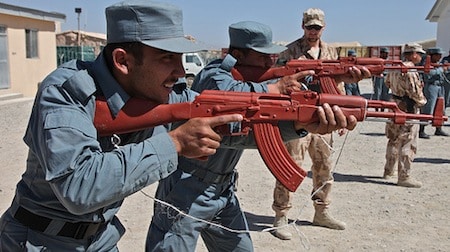
The Special Inspector General for Afghan Reconstruction (SIGAR) issued a scathing report showing the Department of State gave a staggering 87 percent of all Afghan reconstruction funds to only five recipients.
In fact, 69 percent of all taxpayer money spent went to just one contractor.
Much Money into Few Hands
SIGAR tells us the top-five recipients of State Afghanistan reconstruction awards by total obligations accounted for approximately $3.5 billion, or 87 percent, of total State reconstruction obligations. State awarded the remaining 13 percent of obligations to 766 recipients, who averaged about $676,000 each in total obligations.
Dyncorp International Limited Liability Corporation (Dyncorp) was the single largest recipient of State department funds, receiving $2.8 billion in contracts, or 69 percent of total awards. Dyncorp contracts dealt principally with training and equipping the Afghan National Police and counternarcotics forces. Dyncorp contracts included police trainers, construction of police infrastructure, and fielding police equipment and vehicles. Dyncorp played a similar role, with similar results, in the Iraq Reconstruction.
Next in line at the trough were PAE Government Services Incorporated at $597.8 million, Civilian Police International Limited Liability Company with $53.6 million, the Demining Agency For Afghanistan at $28.3 million and Omran Consulting Company, in the number fifth slot, with only $22.8 million in taxpayer funds awarded.
Including all the smaller awardees, between 2002 and 2013, State dropped about $4 billion on Afghan reconstruction. That sounds bad enough given the near-complete lack of meaningful progress in Afghanistan, until you realize Congress appropriated $96.57 billion in that same time period for Afghanistan reconstruction spread among the Departments of Defense, State and the United States Agency for International Development (USAID).
The Bigger Picture
The implications are three-fold.
The smallest issue seems to be the massive hemorrhaging of money into just one corporate pocket. Given the amounts, one looks forward to future SIGAR reporting about how this came to be. How many non-competed contracts? How many insider deals? How much unaccounted for money? The appearance of corruption, as well as the opportunities for corruption, are evident.
The next issue of course is what, if anything, was accomplished with all that taxpayer money absent enriching a few large corporations. Pick your trend line, and it is hard to find much bang for the buck(s) in Afghanistan. Here are some examples to get you started.
Lastly, we are left with what economists call “waste and mismanagement” the concept that money spent in one way precludes other spending that might have been more beneficial. What might have happened if instead of the U.S. spending extraordinary amounts of money to hire police, build roads, schools and factories in Afghanistan, that money would have been spent here in America on roads, schools and factories?
Reprinted with permission from We Meant Well.

